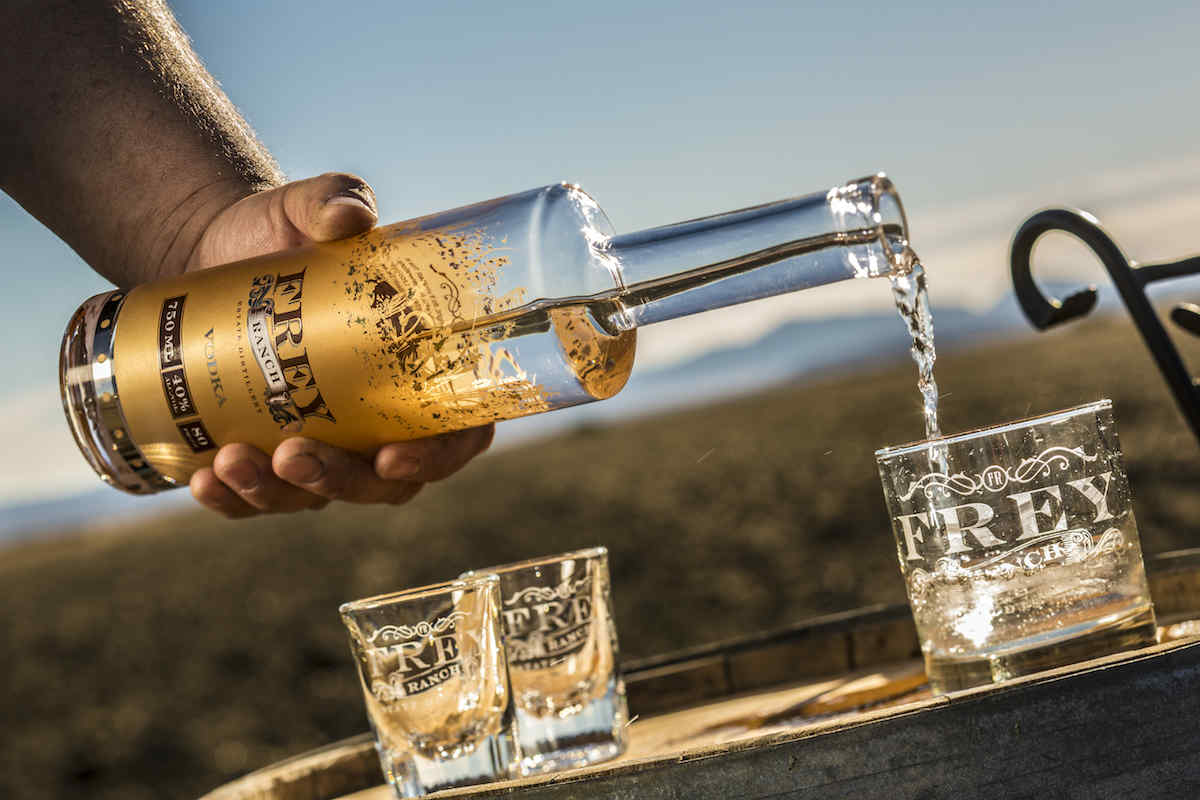It’s October 14th, 2017, and the Frey Ranch Estate Distillery is turning four years old—sort of. While this fourth annual event is billed as an anniversary party, it doesn’t match up precisely with the founding date of the distillery, which is a bit nebulous. And pinpoint accuracy isn’t the point, either. The affair is something like a neighborhood block party, complete with a food truck vending Chicago-style hot dogs and a delegation from the local Red Hat Society.
I’m tailing Colby Frey, who’s making the rounds in quasi-mayoral fashion, shaking hands, slapping backs, and delivering I-can’t-believe-how-big-you’re-getting remarks to kids. His square-toed cowboy boots kick up clouds of dry, Northern Nevada earth with each step. Jack, the nine-year-old lemon beagle that follows his every move, doesn’t seem to mind a bit.
Square-jawed, blue-eyed Frey seems to emerge straight from rancher central casting, and with good reason: he represents the fifth generation of his family to farm the Silver State. But while his forbearers were content to let grain stay grain, Colby saw the potential to turn harvests into gin, vodka, absinthe—and soon—whiskey.
A Frey History Lesson
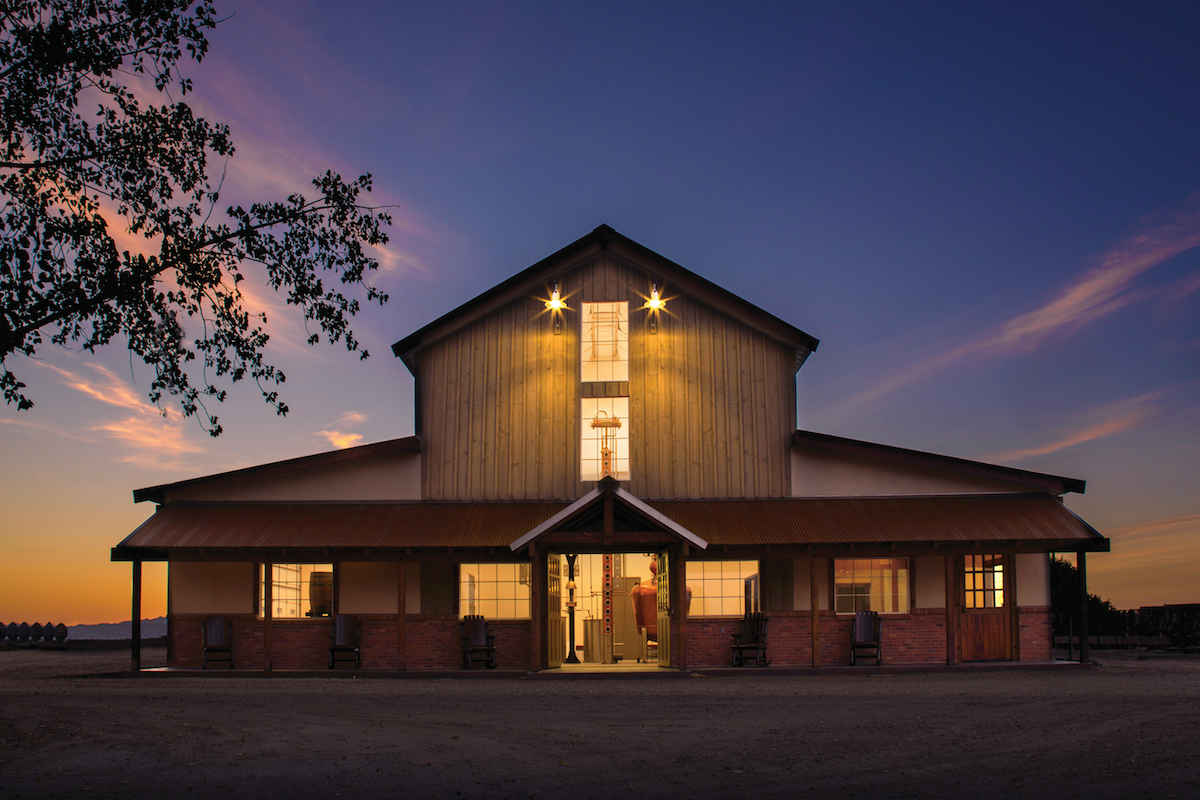
The Freys have been in Nevada for longer than Nevada has been in the Union. The first Frey ranch was established in Genoa, Nevada in 1854, a full decade before the land it stood upon became a state.
The present Frey ranch was built in the 1860s and purchased in 1944 by Colby’s grandfather, who saved up the money over three years while living in a dugout with a dirt floor and a tin roof. It sits in Churchill County, which is home to just over 24,000 individuals. My drive from Reno that morning was a 70 mile trek through some of the driest land I’d ever seen: the idea that anything could be growing around these parts seemed unbelievable.
By Colby’s telling, it just takes experience and old-fashioned family know-how.
“We’re in the driest state in the nation, so not everybody can farm in the desert,” he says. “What’s unique about our situation is that my forefathers passed on the knowledge of what to do—and more importantly, what not to do—over the last 150 years.”
Wine Beginnings
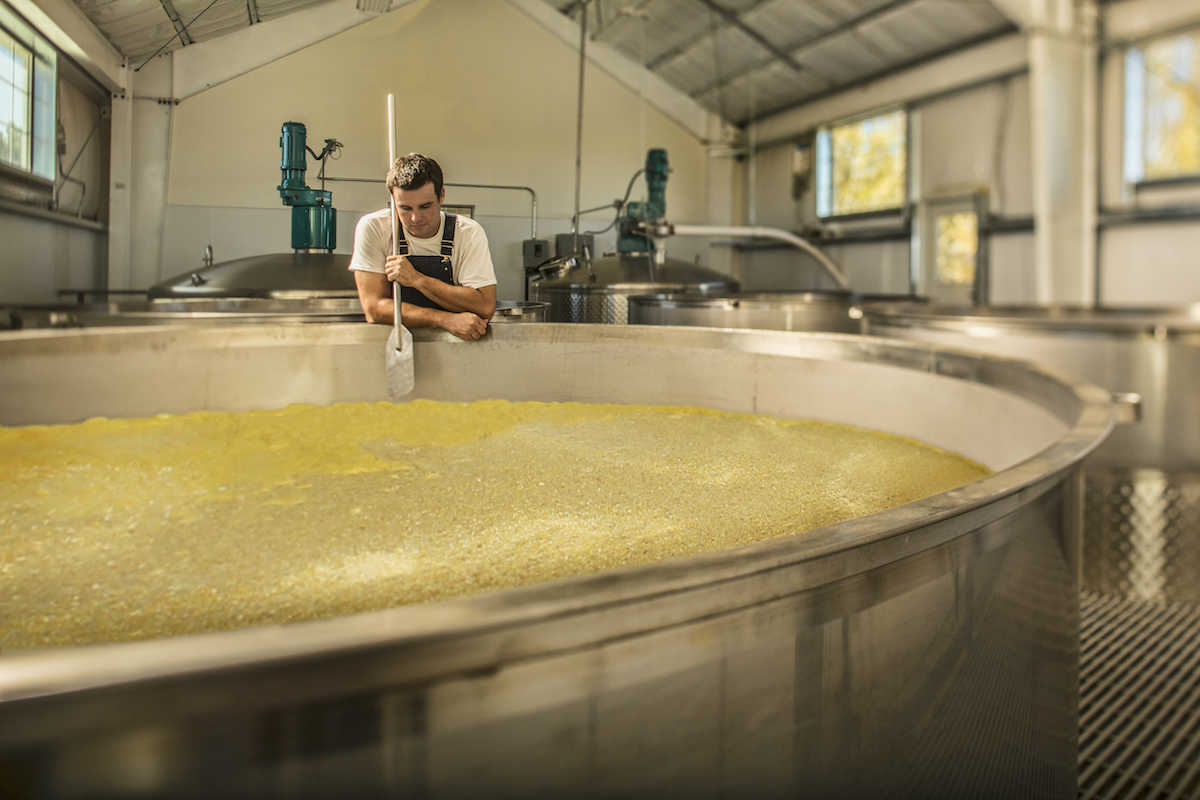
Colby’s path to distilling runs through a vineyard. In 2001, Colby’s father, Charlie Frey, added a winery to the family enterprise. This brand, Churchill Vineyards, had been a dream of Charlie’s, but it was also good business.
“We were looking for a crop that consumes less water, and has more revenue generating potential,” says Colby. “Ground here is really expensive because of our water rights—we’re in the desert.”
The crops they had been growing, such as alfalfa, were generally low value. When they learned that grapes used just 10 percent of the water that their other crops required, and could yield a much greater return on investment, they leapt at the opportunity.
The winery flourished, and today Churchill Vineyards is the only estate winery in Nevada—meaning that the grapes are grown, crushed and bottled on-site. Not content to rest on their laurels, the Freys began to think of new ways to use crops they had already been growing.
“We were watching all of these grains we were already growing go to the dairy next door and get fed to dairy cows,” says Colby. “We said, why aren’t we making something out of it?”
Armed with the knowledge from his recent foray into winemaking, Colby decided to tackle distilling. He built a 50-gallon pot still from scratch and received a license in 2006, which came with a few strings attached.
Because distilling was so new to Nevada, there was a lack of state laws specifying what they could and couldn’t do with the license. It allowed Colby to make and age spirits, but not to sell them or even provide samples. Even though the product couldn’t be sold to the public, Colby believes that fallow period reaped its own benefits by giving them years to re-tool their recipes.
It wasn’t until 2010 that Nevada enacted new laws regulating small distilleries, giving Colby the reassurance he needed to make a major investment in distilling. (In 2009 Colby bought the ranch from his father, who periodically comes out of retirement for tractor duty.)
While Colby’s agricultural knowledge was second to none and he’d helped his father build a successful winery, he was still a novice when it came to distilling. But he did have one major advantage on his side: the improvisational spirit of ranch life.
“That’s the best part about growing up on the ranch,” says Colby. “You know a little bit about a lot of different things, and so it gives you confidence.”
By 2013, Colby had cast aside his original still and constructed a distillery building with a shiny new 500-gallon Vendome still on the property—creating the occasion for this four-year-ish anniversary party.
“Because Somebody Told Us We Couldn’t”
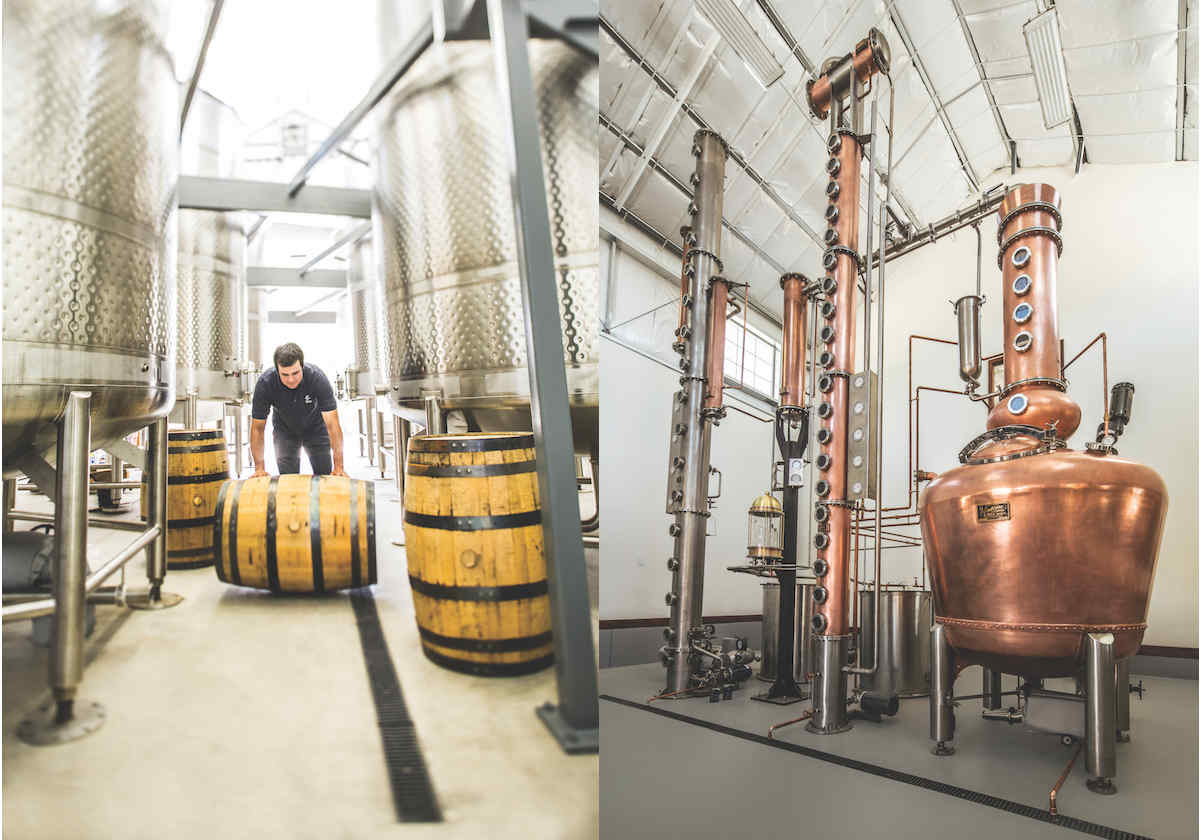
Today four spirits are sold under the Frey Ranch Estate Distillery label: a vodka, a gin, a barrel-aged gin and an absinthe. Absinthe wasn’t in the original plan, but as Colby proudly recounts, “we did it because somebody told us we couldn’t.”
The wheat, rye, barley and corn used to make those spirits is grown on the ranch. Colby would prefer to grow everything himself but admits that he must buy some botanicals for the gin and absinthe that won’t grow on their land. Still, he finds ways to incorporate ingredients from the ranch, even if they’re unorthodox.
“For our gin we pick sagebrush from right here,” Colby says, pointing toward a sage brush that is quite literally in front of us and perhaps 10 yards from the distillery building. He invites me to pull off a bit of the shrub, rub it between my hands and smell it. I do, and it’s amazing: fresh, sweet, and floral.
“That reminds me of Nevada,” Colby says. “When it rains it smells like that.”
While the spirits they’ve put on the market have met a positive reception—the Gin and Barrel Finished Gin No.1 won gold and double gold, respectively, at the 2017 San Francisco World Spirits Competition—a great deal of what Colby’s worked on remains under the surface.
“Whiskey is our main product, and we don’t have any bottled yet,” he says. “But it’s all aging right now. We always thought that whiskey was going to be 80-90% of our sales.”
From Farm to Glass
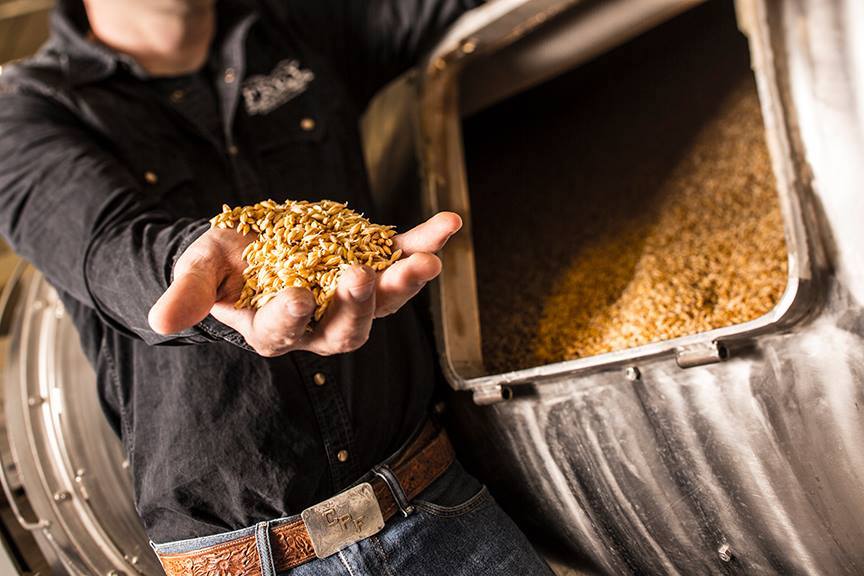
Colby’s hinted that we’ll be trying some of that whiskey first-hand in the barrel room, but first he’s waiting for one of many distillery tours to wrap up. In the meantime, I scrutinize the landscape and the objects that make it unlike any other distillery I’ve visited: grain silos, parked tractors, and enormous irrigators. I remind myself that the distillery is just one element in a giant, functional farm.
“We grow a lot of alfalfa,” says Colby. “Then we grow wheat, rye, barley and corn for the distillery. We grow oats. We’ve grown all kinds of stuff—any kind of forage crop is what’s traditionally grown around here.”
The majority of what is grown on the farm goes to feed dairy cows. About 10 percent of the crop comes back to the distillery, which is currently operating at just 10 percent capacity. The distillery produces about 10,000 cases—or 120,000 bottles—per month, and Colby anticipates selling 10,000 to 20,000 cases per month for “a long time.”
“We oversized the distillery so that we could shut it down for the summer,” Colby says. “All of our employees can go out to the farm and concentrate on growing really good ingredients. Then in the winter, we fire up the distillery and we concentrate on making great spirits. So we’re not distracted by the farm while we’re distilling, and not distracted by the distillery when we’re farming.”
Dedicating 10 percent of his grains to spirit use gives Colby the ability to grow them differently than the grains that won’t end up in a glass.
“[In cattle feed] you want high proteins,” he says, “but for grains it’s an inverse. When protein is high that means starch is low. We want high starch for the distillery, but low protein. It’s almost the opposite of what we do for cattle feed.”
Colby also drought-stresses his rye, which results in a smaller grain with a greater level of spiciness. He compares this to the tendency of small grapes to produce greater flavor in wine.
But what Colby is perhaps proudest of occurs after the grains have been harvested. He hands me a piece of malted barley and asks me to taste it. I do, and it’s surprisingly snackable: crunchy, chewy, a little like a grape nut.
“It’s grown right here, and we malt it,” Colby says.
Next he hands me a piece of straight, un-malted barley. It tastes just the way you’d expect a regular raw grain to.
“It’s pasty, no flavor, no crunchiness,” he says. “That’s the difference between malting and not malting.”
I’m a bit of a malting novice, so Colby explains the process to me. A harvested grain is sprouted through germination. But once it’s grown just a little bit, the grain is dried to stop any future growth.
The property has its own building dedicated to the malting process, and referred to by Colby as “the malt room.” Outside of the building stand two silos with un-malted barley direct from the field. The machinery inside the building was custom-ordered from a local machine shop in Fallon, Nevada.
“It’s all right here,” says Colby. “There’s no company in the United States that really offers this kind of equipment. Most of the big malting companies have machines that do several hundred tons at a time, and this one does one ton at a time. We’re not doing this to make money malting. We’re doing this to further our estate product.”
To drive home the importance of malting on-site, and the right way, Colby brings it back to my taste-test lesson.
“It tastes totally different. Someone told me, ‘why don’t you just throw in barley and commercial enzymes that do the same thing?’ It’s not the same: you can taste the difference between the malt and the barley.”
It also lines up with another of Colby’s goals. Like the wine produced by Churchill Vineyards, he wants their spirits to be completely estate-made when possible.
“From the ground to the glass we have total control,” Colby says. “From seed selection, fertilizer, planting methods, planting depths, types of soils, irrigations, harvest schedules—everything.”
The vodka, gins and absinthe are all estate products (though the gin and absinthe use off-site botanicals for some of the flavoring, the grains used to make the base spirit are grown entirely on-site), and they’ll soon by joined by estate whiskeys.
The Barrel Room
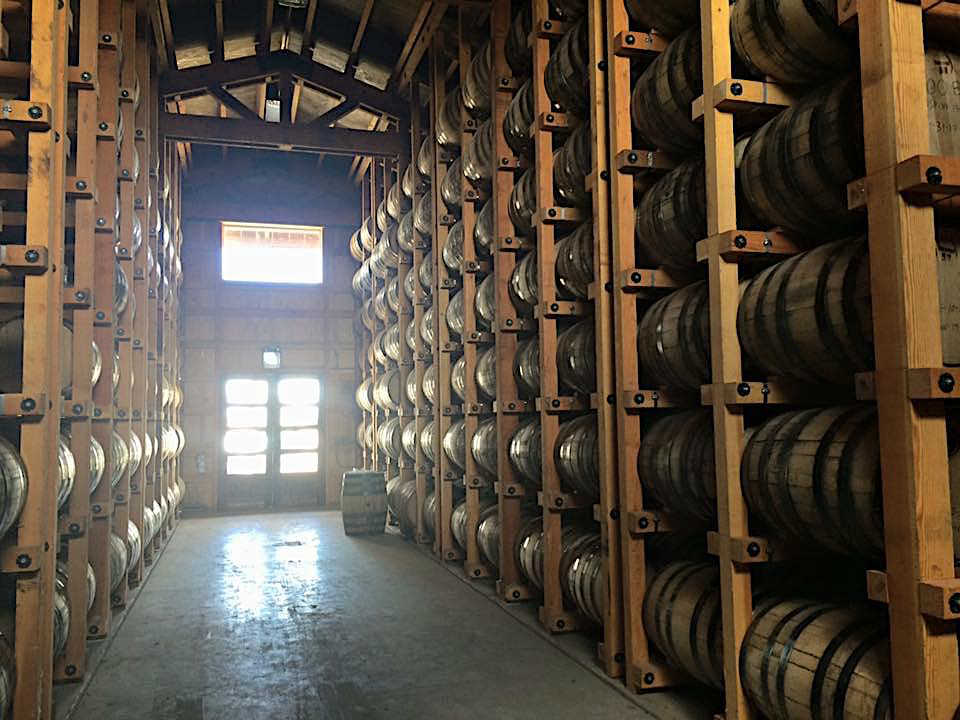
Stacked seven deep and seven high, you’ll find 1,463 53-gallon barrels in the aptly-named barrel room. The compact square footage and high ceiling of the space gives it the feeling of a particularly large and crowded closet. Depending on angel’s share, Colby estimates that over 400,000 bottles of whiskey are lying in wait around us.
The room is unheated and isn’t air-conditioned, allowing the aging spirit to be affected by the unique local climate.
“If you go to Kentucky, they’ll say they have four distinct seasons. And we laugh, because we’re in Nevada,” Colby says. “We’ve got more seasons than that. Sometimes we’ll have four seasons in one day.”
According to Colby, local temperatures can fluctuate from zero in the wintertime to over 100 degrees in summertime, advancing the aging process (and the angel’s share). The element missing from this otherwise diverse climate is humidity, a problem he rectifies through the use of a costly humidification system.
Colby estimates that 60 percent of the aging whiskey is bourbon and another 30 percent is rye. The last 10 percent is more obscure, specialty stuff scattered in-between, including a 100 percent oat whiskey, a quad malt and even a “peated” single malt made without any actual peat.
“By growing all of our own grain and malting ourselves we can experiment with that kind of stuff,” says Colby.
The oldest whiskeys in the barrel room are three years old. Colby anticipates that the flagship bourbon will be the first release, once it has reached four years maturity. Others will follow, though Colby stresses that release dates will be determined by the spirit’s quality rather than a predetermined age target.
“There’s a saying in the wine industry,” says Colby, “You’ve got to like what you make, because you might end up drinking it all yourself.”
Colby has gathered a thief and a stack of plastic cups, and we start tasting from the barrels. First up is the bourbon. The bourbon—and all the other spirits I’ll be tasting—is 125 proof straight from the barrel. It’s spicy from the high rye content, and creamy from the wheat, with strong notes of oak and caramel.
The next spirit I sample is rye. Colby tells me “rye’s a pain in the butt to make,” and relates his travails in producing a 100% rye.
“It expands in the tank. We found that out the hard way: we thought that we were just going to fill it up about six inches lower than our bourbon and call it good. We came in the next morning and the entire floor had three inches of ‘rye snot.’ Now we fill them up halfway.”
To me, it tastes like that unpleasant morning at work was worth it. The bold spice of the rye lingers on the tongue for what feels like an epoch.
But if the rye posed a challenge, its sounds like child’s play compared to what we taste next: a 100 percent oat whiskey. Colby explains that oat is difficult to work with because it is over 60 percent “holes,” which are protective coatings that surround the seed. When Colby attempted to ferment the oats, the tank filled with so many holes that the continuous still jammed. In response, Colby sourced a special variety of hole-less, “naked oats” from Canada and planted them on the ranch to make future fermentations smoother.
“When we first barreled it it tasted like blueberries,” says Colby, “then a couple months later it tasted like bacon. And after that it started tasting like oatmeal cookies. Now it’s starting to get oaky.”
I taste it myself, and it’s unlike anything I’ve ever experienced. It reminds me of picking up a handful of wet soil: earthy, woody, even dirty in a strangely satisfying way. I think of it as a “barnyard whiskey,” though I also like Colby’s descriptor: “The pinot of the whiskeys.”
The single malt, at just 11 months, is much younger than the other spirits I’ve been sampling. It also sounds like it may have been the most work: Colby wanted to make a true scotch-style whiskey, but didn’t want to compromise its estate status by importing peat. To compensate, he came up with a solution that could only exist in a rancher’s imagination.
Colby took decomposed corn stalks and bound them together with corn powder that had been ground to a paste. He then pressed the mixture in bread pans, and used it to smoke his malted barley in a homemade smoker converted from a fireplace. I ask him if he’s ever heard of this exact method being used before.
“We just made it up. We didn’t know what we were doing.”
It has the scotch smokiness Colby sought, but also features a strong vegetal flavor that sets it apart from any Islay I’ve ever had.
Lastly, I try the Quad Malt, made from malted corn, wheat, rye and barley. Like some of the other things I’ve tasted, it seems to come directly from Colby’s eagerness to defy conventions.
“Normally only barley is malted, so we malted all four and did it in the same mash bill as our bourbon,” he says.
This spirit, which is also 11 months old at the time of tasting, somehow reminds me of a corn husk. It brings back memories of peeling corn for my mother on our porch in the summertime.
Soon we’re back outside, where the anniversary party remains in full swing. Colby surveys it, taking pleasure in seeing the distillery and farming sides of his family business merge together.
“There’s a mechanic right there who fixes engines, telling people how whiskey gets made,” he says, gesturing toward an employee.
He’s right: the whole scene is a bit unorthodox. But that marriage of farming and distilling has served Frey Ranch well, and it may provide us all with some damn interesting whiskey in the coming years.
All photos courtesy of Frey Ranch Estate Distillery.
